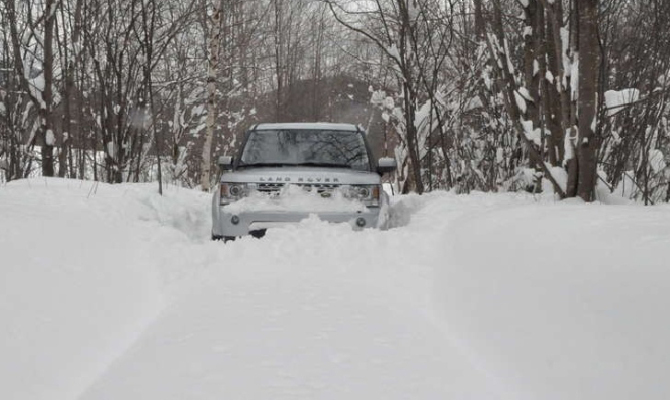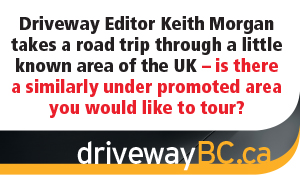“Actions by cars and trucks will alert you more quickly to problems and give you a split second extra time to react safely.”
The rain and windstorms have started and it won’t be long before the temperatures start to dip. Northern B.C. and the Interior have already experienced the cold.
At the coast, it seems every year the first snowfall creates chaos and adjusting to the conditions is a big challenge for many people. That said; driving in the winter season generally presents more problems than driving in other seasons wherever you call home. The vehicle and the driver must be prepared as well as possible to cope with these kinds of driving conditions.
In winter driving, braking and stopping the vehicle, of course, cause the most difficult moments. The tires play a critical role in stopping the vehicle, and they need even more care and attention than in the other seasons.
Most SUVs have a passenger car tire classification with M+S stamped on the sidewall, for Mud and Snow and are considered all-season tires. If it is not, your vehicle must be fitted with tires suitable for any type of climate, even the most severe ones.
In winter the pressure of the tire must also be controlled more frequently. This is because a reduction of the outside temperature causes a contraction of the air inside the tire, accelerating the normal and gradual pressure loss process by a value around 1-2 PSI for each 5° C decrease in temperature.
Contrary to popular opinion, a lower inflation pressure than normal does not improve tire traction on snow. It makes them much more liable to damage. Always remember that in any season and with any temperature, insufficient pressure is always the main cause of tire damage. Here is some advice to always bear in mind it is during winter driving conditions: Use brakes carefully. Brake early. Brake correctly. It takes more time and distance to stop in icy conditions. Watch for slippery bridge decks, even when the rest of the pavement is in good condition. Bridge decks will ice up sooner than the pavement. Do not use the cruise control in winter conditions. Even roads that appear clear can have sudden slippery spots and the short touch of your brakes to deactivate the cruise control feature can cause you to lose control of your vehicle. Don’t get overconfident in your 4×4 vehicle. Remember that your four-wheel drive vehicle may help you get going quicker than other vehicles but it won’t help you stop any faster.
Many 4×4 vehicles are heavier than passenger vehicles and actually may take longer to stop. Don’t get overconfident in your 4×4 vehicle’s traction. Your 4×4 can lose traction as quickly as a two-wheel drive vehicle.
If your vehicle is equipped with anti-lock brakes, do not pump them in attempting to stop. The right way is to step on the brake pedal and steer against the slide. Look further ahead in traffic than you normally do. Actions by cars and trucks will alert you more quickly to problems and give you a split second extra time to react safely.
Recent Comments
- { Enjoyed your Forest of Bowland in the BMW X5M, particularly the photo of the BMW in front of the main part of Stonyhurst College where... }
- { Bantam designed the Jeep, not Willy's or Ford. The American military gave the original Bantam prototype to Willys and Ford to copy. There is plenty... }
- { All Escalades come with a 6.2-lilter V8 engine that produces 420 horsepower. A six-speed automatic is the only transmission offered and drives the rear wheels.... }
- { Alexandra is an excellent journalist. }
Popular Posts
- Journey to a ‘Sparkling’ Luxury Okanagan Resort “Four lucky readers will put a Dodge Journey’s weekend-...
- The Need For Speed: Hike Those Highway Limits More than half of those polled believe the province sho...
- Drives-U-Crazy… Erratic drivers. An early morning drive from Kelowna to Vancouver is nor...
- Readers Respond: The Pros and Cons of Increasing B.C. Speed Limits Increasing the speed limits will only increase risk to...
- Honda CR-V Review: The Compact Crossover To Get Things Done The CRV is a very stylish and aerodynamic crossover veh...







